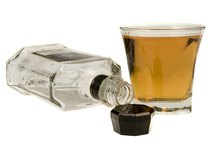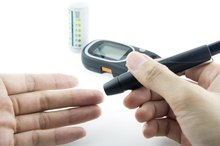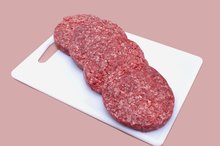The Signs & Symptoms of Mild Diffuse Fatty Infiltration in the Liver
Fatty liver disease, also known as hepatic steatosis, is most often associated with alcoholism, but it may occur in patients who are not heavy drinkers. In these individuals, common causes include obesity, diabetes, elevated triglycerides, endocrine diseases such as Cushing syndrome, and medications such as steroids. Symptoms are usually mild, with or without liver enlargement and elevated liver enzymes.
If you are experiencing serious medical symptoms, seek emergency treatment immediately.
Symptoms
Most patients with fatty infiltration of the liver do not have symptoms or may experience mild discomfort. The discomfort is usually described as dull or achy and is most commonly located in the right upper quadrant of the abdomen, or the space above and to the right of the navel and below the rib cage. This corresponds to the liver’s location.
- Most patients with fatty infiltration of the liver do not have symptoms or may experience mild discomfort.
- The discomfort is usually described as dull or achy and is most commonly located in the right upper quadrant of the abdomen, or the space above and to the right of the navel and below the rib cage.
Signs
Lisinopril & Elevated Liver Enzymes
Learn More
Hepatomegaly, or liver enlargement, is the most common sign associated with fatty liver disease. A physician can assess the liver’s size by means of a physical exam. Enlargement may also be demonstrated by the use of various imaging modalities, including ultrasound, CT or MRI. However, these modalities do not distinguish fatty inflitration from other causes of liver enlargement, such as hepatitis. Liver biopsy may be required in cases where the diagnosis is unclear 1.
- Hepatomegaly, or liver enlargement, is the most common sign associated with fatty liver disease.
Laboratory Findings
Laboratory studies may show mildly elevated levels of liver enzymes, which indicate damage to the liver and the release of cellular contents. Most frequently the aminotransferases, ALT and AST, are mildly elevated; however, laboratory values may be normal in up to 80 percent of persons with fatty liver disease not caused by alcohol. Alcoholics, on the other hand, almost always show an elevation of ALT greater than AST.
Related Articles
References
- "Current Medical Diagnosis and Treatment"; Stephen J. McPhee; 2009.
- "Robbins and Cotran Pathologic Basis of Disease, 7th edition"; Vinay Kumar et al.; 2005.
- Cleveland Clinic. Enlarged Liver. Updated September 7, 2018.
- Centers for Disease Control and Prevention. What is Viral Hepatitis? Updated
- Centers for Disease Control and Prevention. Enlarged Liver: Diagnosis and Tests. Updated September 7, 2018.
- Nassir F, Rector RS, Hammoud GM, Ibdah JA. Pathogenesis and Prevention of Hepatic Steatosis. Gastroenterol Hepatol (N Y). 2015;11(3):167–175.
- Merck Manual Professional Version. Alcoholic Liver Disease. Updated July 2019.
- Madrazo BL. Using imaging studies to differentiate among benign liver tumors. Gastroenterol Hepatol (N Y). 2010;6(7):423–427.
- Cong WM, Bu H, Chen J, et al. Practice guidelines for the pathological diagnosis of primary liver cancer: 2015 update. World J Gastroenterol. 2016;22(42):9279–9287. doi:10.3748/wjg.v22.i42.9279
- Memorial Sloan Kettering Cancer Center. Liver Metastases (Secondary Liver Cancer). Updated
- Cleveland Clinic. Glycogen Storage Disease (GSD). Updated August 2, 2019.
Writer Bio
Adam Dave, M.D., has written both fiction and nonfiction since 1997. His most recent work, "The Paradigm Diet," a short course on applied nutrition, is available on Amazon. He holds a medical degree from Medical University of the Americas and trained in family medicine at the University of Colorado.








